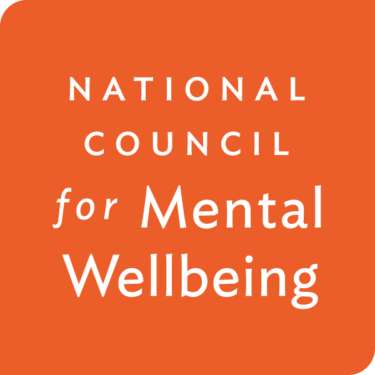Fostering Resilience and Recovery: Change Concept 3
Build Compassion Resilience in the Workforce
Workforce concerns, such as compassion fatigue, secondary traumatic stress, vicarious trauma or burnout are common among staff and providers who work with individuals who have experienced trauma. These workforce concerns affect individual staff members and the overall organization. Burnout is associated with lower patient satisfaction, reduced health outcomes and it may increase costs. Burnout and secondary traumatic stress also affect families of staff members.
Building resilience in the workforce involves creating environments in which staff can maintain a compassionate presence in all interactions with patients, their families and colleagues, while maintaining their own well-being. This change concept outlines common workforce concerns that result from working with individuals impacted by trauma and strategies for creating environments in which individual and organizational compassion resilience thrives.
Change Concept 3 Goals
- Our primary care service team appropriately respond to workforce concerns (burnout, secondary traumatization and compassion fatigue).
- Our primary care service team’s written policies and procedures include recognition of the pervasiveness of trauma in the lives of people using our services and a commitment to reduce retraumatization and promote well-being and recovery and structures.
- Our primary care service recognizes that emotional regulation is a cornerstone of resiliency and equips staff to help themselves and patients regulate their emotions and/or physical responses.
Educate and train staff on symptoms of common workforce concerns
It is common for staff and providers who work with individuals impacted by trauma to experience adverse effects, including burnout, secondary traumatic stress, vicarious trauma and compassion fatigue. Educating staff on these workforce concerns is an early step in the process of building resilience and preventing workforce concerns among staff.
Create a culture of compassion resilience
There are steps CITs and leaders can take to create a culture of compassionate resilience in their organizations. The Compassion Resilience Toolkit recommends the following four primary steps to build a culture of compassion resilience:
- Expectations from Staff and Others – Identifying and assessing staff self-expectations and expectations of others helps staff understand problematic expectations that can lead to compassion fatigue and other workforce concerns.
- Compassionate Boundary Setting – Establishing and managing boundaries can help protect staff from compassion fatigue and other workforce concerns.
- Staff Culture – To create an environment that supports compassionate resilience, leaders and staff can work together in small teams to identify and implement organizational values, beliefs, practices, and behaviors.
- Staff Self-Care – see below
Implement policies and procedures to build staff resilience
Developing and implementing policies and procedures that systematically prevent and address compassion fatigue and build compassion resilience signals to staff that their wellness is a high priority among organizational leadership. Organizations must first evaluate what policies, procedures and pathways may impact compassion fatigue, then review all policies, procedures and pathways for alignment with trauma-informed principles. Use the Trauma-Informed Care Initiative Alignment Tool to assist with that step in the process. Modify any policy that is not in alignment with the trauma-informed principles and could potentially cause burnout.
Each organization should, at a minimum, have the following trauma-informed policies to prevent or address compassion fatigue and other workforce concerns:
- Conflict resolution policy for conflict between staff.
- Conflict resolution policy for conflict between staff and patients.
- Formal grievance policy.
- Policy for staff and/or patients to communicate when the physical environment is unsafe without fear of retaliation.
- A policy for staff and/or patients to communicate without retaliation when interpersonal interactions are unsafe.
- A code of conduct policy that states clearly that all staff must participate in creating safe and secure environments.
- A policy on addressing adverse incidents that includes debriefing and support for those impacted by the incident.
- A policy ensuring supervised individual or group trauma-informed meetings where staff can discuss potential burnout or STS without fear of retaliation.
- A benefits policy or plan that includes access to services and supports including, but not limited to, behavioral health services, employee assistance program and wellness activities.
Provide time and resources for staff to process difficult situations
It is important for primary care organizations to provide time and resources for staff to process difficult situations. Providing time in meetings, supervision and team huddles to process difficult situations and receive support and resources from the team can help prevent burnout and secondary trauma and build compassion resilience. Some primary care organizations utilize Balint Groups as a group supervision model that allows for a safe place for staff to discuss interactions with each other and patients. Others utilize individual trauma-informed supervision, like reflective supervision, or the staff circle framework for facilitating difficult conversations.
Encourage staff assessment of wellness practices
Staff can use the Compass Wellness Practices Assessment to conduct a self-assessment of their wellness practices. Through the assessment, staff reflect on their wellness practices across four major domains: heart (relationships, emotions), spirit (core values, rest and play), strength (stress resilience, care for body) and mind (school/work, organization).
Encourage staff to develop and implement self-care plans
Self-care plans help staff better cope with stress and adversity. Staff should receive information and education on the types of tools and resources available to them from their employer, for example, employee assistance programs. Other preventive strategies include informal and formal self-report screening workplace self-care groups, creating balanced caseloads and providing flextime scheduling. It is important to honor the principles of diversity, equity and inclusion when providing self-care opportunities for staff as not all staff will choose to engage in the same types of self-care.
Implementation Tools
- Compassion Resilience Toolkit for Health and Human Services Leaders and Staff
- How to Avoid the Contagion Effect of Sharing Tough Stories between Colleagues
- ProQOL
- Provider Resilience App
- Self-care Planning Tools:

